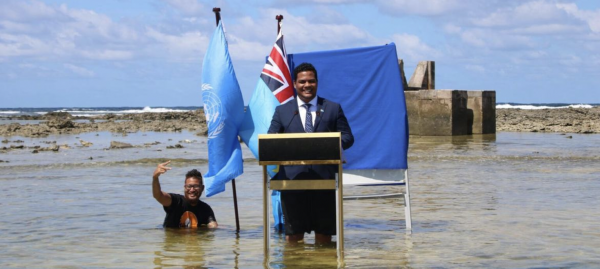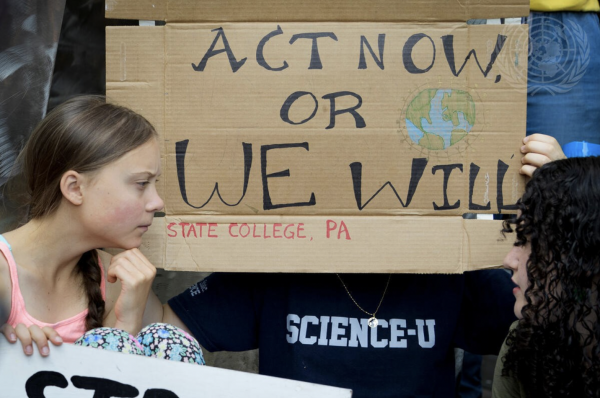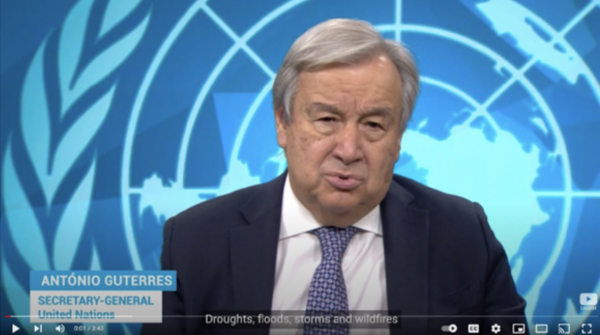“We must close the emissions gap before climate catastrophe closes in on us all”
United Nations Secretary General António Guterres
This edition focuses on Sustainable Development Goal 13 (climate action), as world leaders gather in Egypt for the UN Climate Change Conference. Taking place from 6 to 18 November, COP27 seeks solidarity and action on an array of issues critical to tackling the climate emergency – from urgently reducing greenhouse gas emissions, to building resilience, and delivering the necessary financing for developing countries.
“Every government, every business, every investor, every institution must step up with concrete climate actions for net zero,” said United Nations Secretary-General António Guterres, ahead of the 27th Conference of the Parties to the UN Framework Convention on Climate Change. “On every climate front, the only solution is decisive action in solidarity.”
COP27 Heads Up
3 November: UNEP will launch the 2022 edition of the Adaptation Gap Report
6 November: WMO will present its provisional State of the Global Climate 2022 Report
7-8 November: Watch COP27 Leaders Summit Live
7 November: WMO will launch an Early Warning Systems Action Plan
8 November: Stay tuned on the recommendations of the High-level Expert Group on the Net-Zero Emissions Commitments of businesses, investors, cities and regions that the Secretary-General is expected to receive at COP27
14 November: Water Day at COP27 sets the stage for UN 2023 Water Conference

The temperature has already risen 1.1ºC above the pre-industrial level, with glaciers melting and the sea level rising. It affects us all. A report from the Intergovernmental Panel on Climate Change (IPCC) estimates that 3.3 billion to 3.6 billion people live in contexts highly vulnerable to climate change. These hotspots are concentrated in small island developing States, the Arctic, Southern Asia, Central and South America, and much of sub-Saharan Africa. By 2030, an estimated 700 million people will be at risk of displacement by drought alone.
Achieving Goal 13 is therefore an imperative to save lives and livelihood, and key to making the 2030 Agenda for Sustainable Development – the blueprint for a better future – a reality.
Read: COP27: What you need to know about this year’s big UN Climate Conference
Watch: Flight for Life, an amination film about a family displaced from their farm by the climate crisis
In the lead-up to COP27, the United Nations has issued a series of major reports, with a mixed bag of bad news and some positive trends. The bottom line is that humanity is in a race against time to preserve a liveable planet.

A new report from the United Nations Children’s Fund (UNICEF) indicates that heatwaves are becoming longer, stronger, more widespread and more frequent. By 2050, over 2 billion children – virtually every child on earth – are forecast to face more frequent heatwaves.

Greenhouse Gas Bulletin from the World Meteorological Organization (WMO) indicates that atmospheric levels of the three main greenhouse gases – carbon dioxide, methane and nitrous oxide – all reached record highs in 2021. Atmospheric carbon dioxide reached 149 per cent of the pre-industrial level in 2021, primarily because of emissions from the combustion of fossil fuels and cement production. The annual increases of atmospheric methane concentration in 2020 and 2021 are the largest since the systematic record began in 1983.
Emissions Gap Report 2022 from the United Nations Environment Programme (UNEP) finds that policies currently in place point to a 2.8°C temperature rise by the end of the century. Implementation of the current pledges will only reduce this to a 2.4-2.6°C temperature rise by the end of the century. “Commitments to net zero are worth zero without the plans, policies and actions to back it up,” stressed the UN Secretary-General. “We must close the emissions gap before climate catastrophe closes in on us all.”
A new UN Climate Change report shows that the combined climate pledges of 193 Parties to the Paris Agreement are projected to increase global greenhouse gas emissions by almost 11 per cent by 2030 (compared to 2010 levels) – far from the 45 per cent decrease needed to limit temperature rise to 1.5 °C. “We are still nowhere near the scale and pace of emission reductions required,” said Simon Stiell, Executive Secretary of UN Climate Change.
A second UN Climate Change report looked at 62 countries’ net-zero emissions transition plans by mid-century, indicating that their emissions could be roughly 68 per cent lower in 2050 than in 2019, if all the long-term strategies are fully implemented on time.

Africa, which contributes only about 3 per cent of global greenhouse gas emissions, bears the disproportionate brunt of the climate crisis, as many countries in the region lack mitigation and adaptation capacity. Taking place in Egypt, COP27 can be a watershed moment for the continent.
Read Africa Renewal articles:

There is no question about the need to accelerate climate action, and solutions do exist. Get inspired by stories on the Climate Action website, and check out the UN’s ActNow campaign on individual action. Tackling the climate crisis requires all hands on deck. Download the ActNow app, and log your climate actions.
See how media can make a difference. The “Promise of 1.5°C” campaign, launched in Japan, is an initiative in collaboration with members of the SDG Media Compact that signed on to promote the SDGs. Read the article and watch the video aired as part of the UN SDG Media Zone specials.
Catch up with UN News!
- India’s first solar-powered village
- 5 ways to help countries cope with climate crisis
- 5 ways media can support climate action and tackle misinformation
- 12 ways to make a positive impact on your travels
- PODCAST: Climate, conflict, and human rights at risk
- PODCAST: Driving the climate agenda at UNGA77
Resources for COP27:
- Follow dedicated COP27 page.
- Visit the DGC COP27 web page (in six languages) for explainers, updates and useful links in the lead-up to and during COP
- Subscribe daily COP27 climate newsletter
- Subscribe Lid is ON COP27 special edition podcast
- Follow news on Twitter @UN, @UN_News_Centre & @GlobalGoalsUN
- Subscribe COP27 Youtube Channel
- Spread the word by using social assets for COP27
Other Highlights
15 November: The world’s population reaches 8 billion
19 November: World Toilet Day
28 November: Internet Governance Forum




